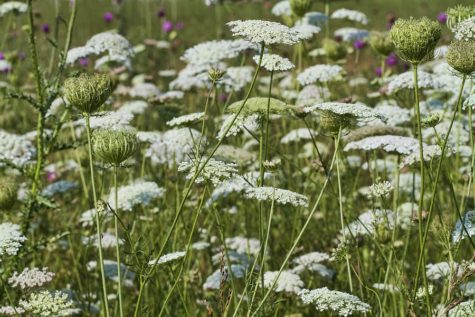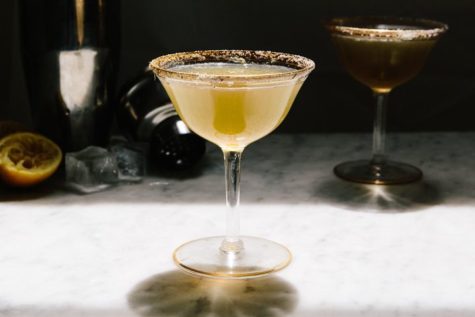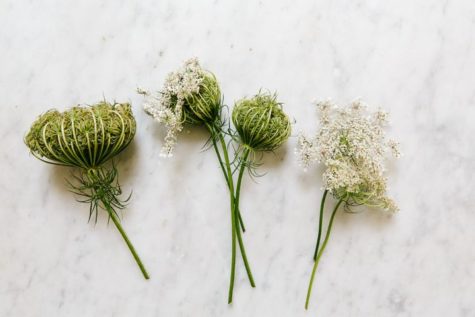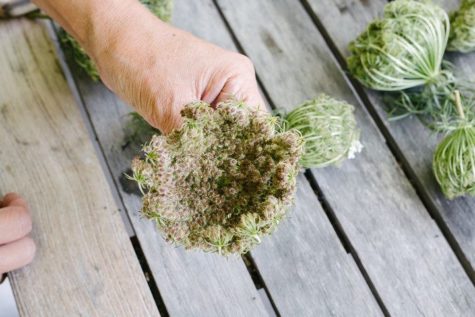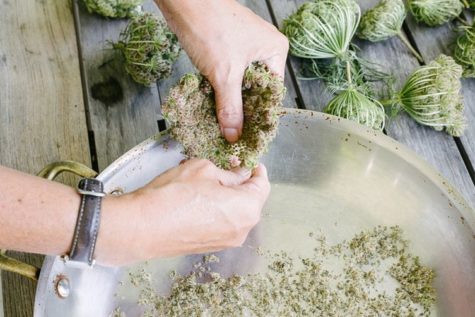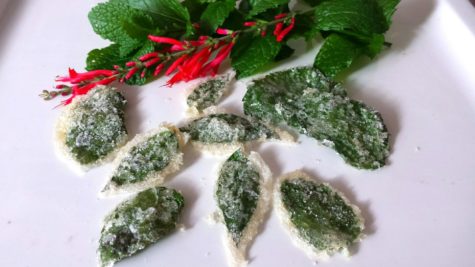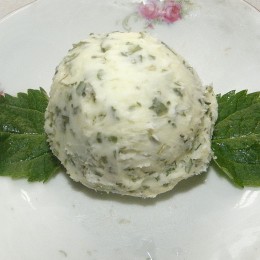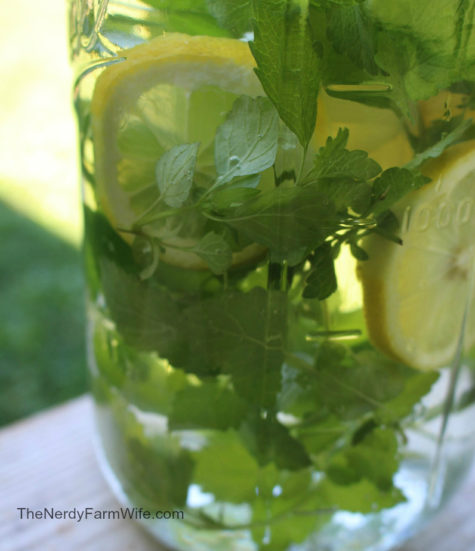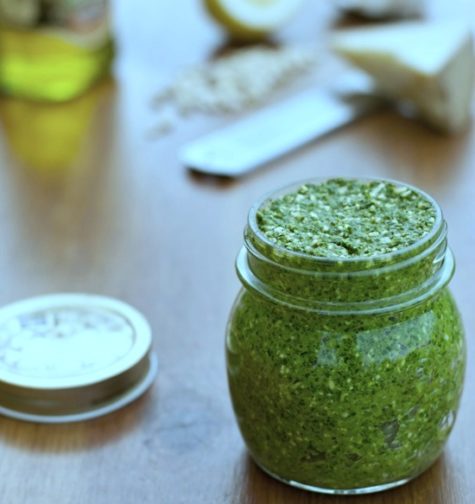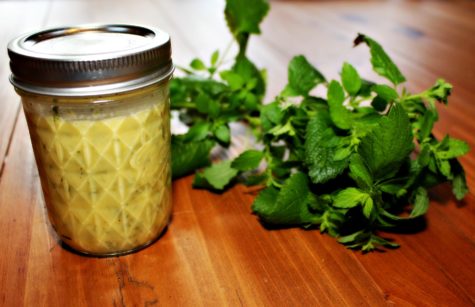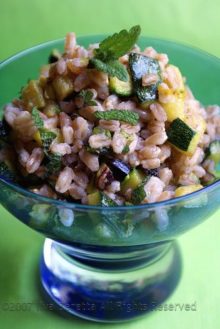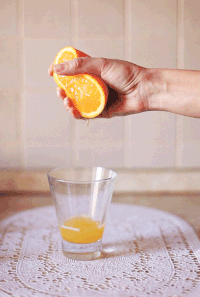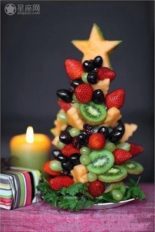Monthly Archives: August 2017
Queen Anne’s Lace Jelly
- 18 large Queen Anne’s lace heads
- 4 Cups water
- ¼ Cup lemon juice (fresh or bottled)
- 1 Package powdered pectin
- 3 ½ Cups + 2 Tbsp. sugar
Bring water to boil. Remove from heat. Add flower heads (push them down into the water). Cover and steep 30 minutes. Strain.
Measure 3 cups of liquid into a 4 – 6 quart pan. Add lemon juice and pectin. Bring to a rolling boil stirring constantly. Add sugar and stir constantly. Cook and stir until mixture comes to a rolling boil. Boil one minute longer, and then remove from heat.
Add color (pink) if desired. Skim. Pour into jars leaving ¼” head space. Then process in a hot water bath for 5 minutes.
Makes about 6 jars
Important Notice:
Historically, Queen Anne’s lace was used for medicinal and contraceptive purposes. Avoid it if you are pregnant, and check with your doctor if you are currently taking medications. More information about this wild herb can be found here: Encyclopedia of Herbology – Wild Carrot
The carrot family contains a number of poisonous look-alikes, most notably poison hemlock. Once the fruit has formed, it is easy to tell them apart, but less so when the plants still only have leaves.
When foraging, always choose high-quality landscapes (not next to the highway or on post-industrial or sprayed sites), and make sure to obtain permission if it is not your own yard. If possible, go out with an experienced forager.
Found at: Herbal Riot
Queen Anne’s Lace Cognac Apéritif
On late-summer evenings, I take the chill off with a cognac apéritif, the rim of the glass dipped in spicy Queen Anne’s Lace.
For the rim:
- 3 tablespoons dried Queen Anne’s Lace fruits
- 1 1/2 tablespoons fine sugar
Crush the dried Queen Anne’s Lace fruits with the sugar and mix thoroughly. (To save effort for multiple drinks, we made a larger batch with the same 2:1 ratio.) Spread the mixture on a saucer or plate that is larger than the diameter of the glass rim. Moisten the rim of the glass by dipping it upside down in a shallow bowl of water and let the excess water drip off for a few seconds. Dip the moistened rim in the Queen Anne’s Lace/sugar mixture, pressing down firmly. The mixture should cling to the rim where moistened. Gently shake off any excess.
Note: Instructions on collecting the Queen Anne’s Lace fruits can be found here: Queen Anne’s Lace
For the drink:
- 2 ounces cognac (I suggest Pierre Ferrant 1840)
- 3/4 ounce fresh Meyer lemon juice or bergamot juice
- 3/4 ounce honey syrup (equal parts honey and hot water)
- 1 teaspoon dried Queen Anne’s Lace fruit
In a cocktail shaker, combine cognac, lemon juice syrup, and ice. Shake vigorously for half a minute or until chilled. Pour the mixture through a strainer (to remove the Queen Anne’s Lace bits) and into the rimmed glass. Serve immediately.
Makes 1
Important Notice:
Historically, Queen Anne’s lace was used for medicinal and contraceptive purposes. Avoid it if you are pregnant, and check with your doctor if you are currently taking medications. More information about this wild herb can be found here: Encyclopedia of Herbology – Wild Carrot
The carrot family contains a number of poisonous look-alikes, most notably poison hemlock. Once the fruit has formed, it is easy to tell them apart, but less so when the plants still only have leaves.
When foraging, always choose high-quality landscapes (not next to the highway or on post-industrial or sprayed sites), and make sure to obtain permission if it is not your own yard. If possible, go out with an experienced forager.
Found at: Food 52
Queen Anne’s Lace
Queen Anne’s Lace looks delicate, but its fruit’s pungent flavor and spice is anything but dainty. The flowers of the wild carrot, or Queen Anne’s Lace, are as edible as the stringy root — but the culinary gem is its fruit. Because each fruit is so small and the harvest window is relatively short, I hadn’t even noticed them until recently. But when I looked closely, I could see that each cluster was full of hundreds of small, eye-shaped fruits.
I picked the bunches with the largest fruit (some of the fruit was red, and some was still green), checking the aroma by breathing deep into their flower nests. The scent can vary, but they are heavily fragrant — oftentimes peppery with hints of coriander and carrot. This complexity is the essence of wild flavors.
To harvest, clip the cluster, remove the fruits from the frame, and dry them under gentle heat (such as a heat lamp or dehyrdrator); you can store them whole to use as a spice or seasoning at will. Once they dry, their strong aroma will dissipate, but give them a quick grind in the Cuisinart, blender, or mortar and pestle and — violà! — the pungent fragrance returns.
One of my favorite ways to use this spice is to sprinkle it on top of carrot cake for an added kick. It’s also wonderful in carrot salads, caramelized on top of crème brulée, or infused into jelly.
Important Note:
Historically, Queen Anne’s lace was used for medicinal and contraceptive purposes. Avoid it if you are pregnant, and check with your doctor if you are currently taking medications. More information about this wild herb can be found here: Encyclopedia of Herbology – Wild Carrot
The carrot family contains a number of poisonous look-alikes, most notably poison hemlock. Once the fruit has formed, it is easy to tell them apart, but less so when the plants still only have leaves.
When foraging, always choose high-quality landscapes (not next to the highway or on post-industrial or sprayed sites), and make sure to obtain permission if it is not your own yard. If possible, go out with an experienced forager.
Found at: Food 52
Candied Lemon Balm Leaves
This is a favorite kid activity around here! Beat an egg white with a tiny bit of water. Dip fresh lemon balm leaves in the mixture, then dip in sugar. Lay the coated leaves on a parchment lined baking sheet. Place the baking sheet in a 200°F oven until the leaves look dry, but not browned. Check after 20 minutes and every 5 to 10 after that.
Use to decorate ice cream, cakes, cookies, cupcakes and other confections.
Found at: The Nerdy Farm Wife
Lemon Balm and Honey Butter
Mix half a stick (4 tablespoons) of softened butter with a pinch of finely chopped fresh lemon balm leaves. Add a drizzle of honey to taste. Yummy on hot fresh bread or biscuits!
Found at: The Nerdy Farm Wife
Lemon Balm Water
Fill a jar with fresh lemon balm leaves and a thinly sliced lemon. Pour in cold water until it reaches the top. Refrigerate for several hours. So refreshing on a hot day!
From: The Nerdy Farm Wife
Roasted Lemon Balm Chicken
- Handful of fresh lemon balm leaves, stems removed
- 1/4 cup or so of fresh sage leaves
- 1/4 cup (1/2 stick) butter, softened
- Salt and pepper, to taste
- 1 large roasting chicken
- 1 teaspoon garlic powder
- 2 tablespoons olive oil
Preheat oven to 400°. Trim herb leaves from stems; wash and pat dry. Set sprigs aside. Chop two-thirds of the leaves, and combine with the butter, salt, and pepper. Rinse chicken and pat dry. Loosen the skin in several places and insert the herb butter underneath. Rub chicken with salt, pepper, and garlic powder. Insert the remaining herb sprigs into the cavity of the chicken. Place breast-side-down in a roasting pan. Bake 30 minutes, then turn chicken over. Bake about 20 minutes longer. Makes 4 to 6 servings.
Found at: Bay Witch Musings
Lemon Balm Pesto
You will need:
- 2 cups fresh lemon balm
- 1/2 cup extra-virgin olive oil
- 3 or 4 cloves garlic
Blend all ingredients together in a food processor until chunky, but not too well blended. Use to baste broiled or grilled fish or chicken, or serve as traditional pesto over pasta. Makes about 2 cups.
Found at: Bay Witch Musings
Lemon Balm Vinaigrette
Ingredients:
- 3 tbls. lightly flavored olive oil
- 1 tsp. finely shredded fresh lemon balm leaves
- 1/8 tsp. salt
- 1/16 tsp. fresh ground black pepper
- 2 tbls. rice wine vinegar
Combine all ingredients just before using, for the freshest taste and brightest color. Use as a salad dressing with baby lettuces and touch of grated, aged Jack cheese, or toss with fresh steamed veggies (it’s delicious with asparagus!).
Found at: Bay Witch Musings
Lemony Zucchini With Farro
- 350 g/12.3 oz farro, you can also use brown rice
- 400 g/14.1 oz zucchini, diced
- 1 large lemon
- 4-5 tblsp chopped pistachio nuts
- A small bunch of lemon balm, finely chopped
- 1 clove of garlic, chopped
- Salt
- Olive oil
Boil the farro in abundant salted water until soft, it usually takes 20-30 minutes. Meanwhile you first either grate the zest of the lemon or you use a lemon zester and put it in a pan with the garlic and some olive oil.
Braise for a minute before adding the diced zucchini and go on braising until the zucchini is sift and golden. Add the pistachio nuts and the farro and then drizzle a little of lemon juice over it. Add the Lemon balm and stir. Serve!
Makes 4 servings.
Found at: Lucullian
